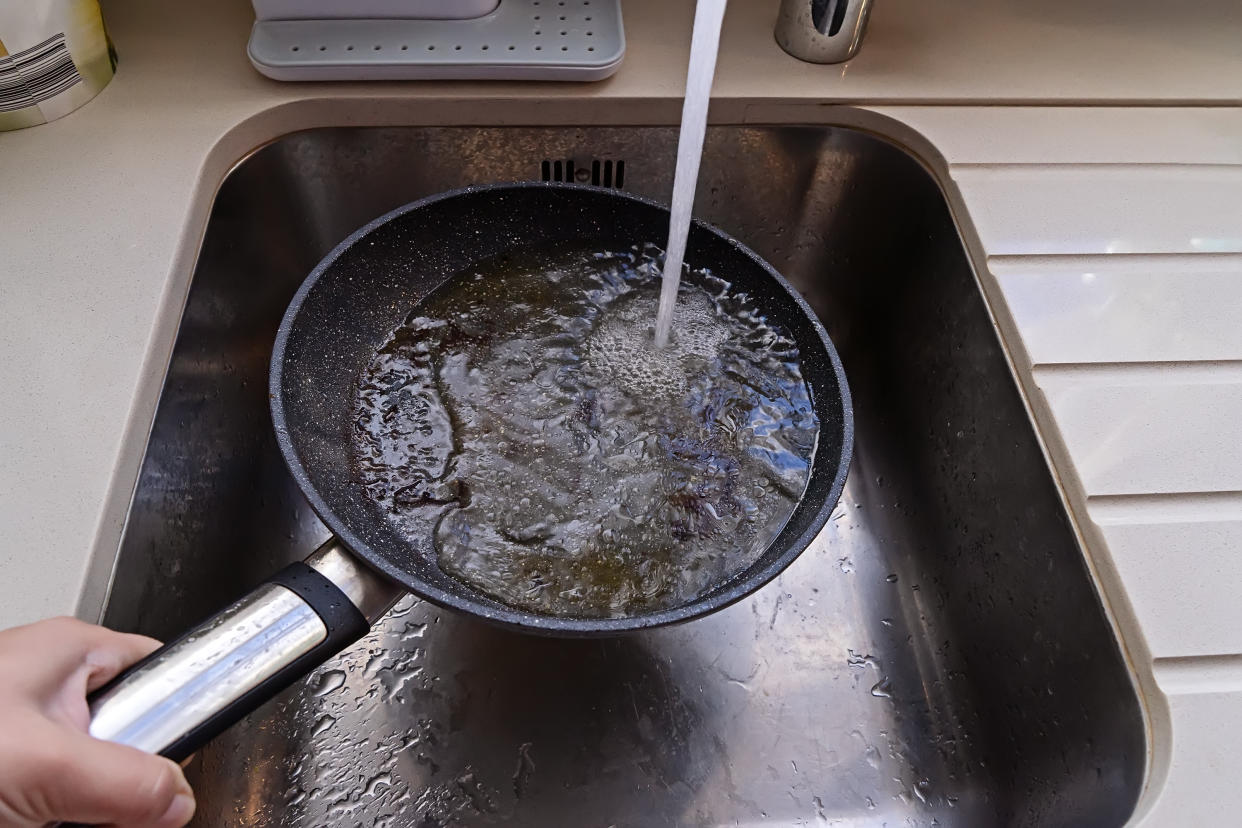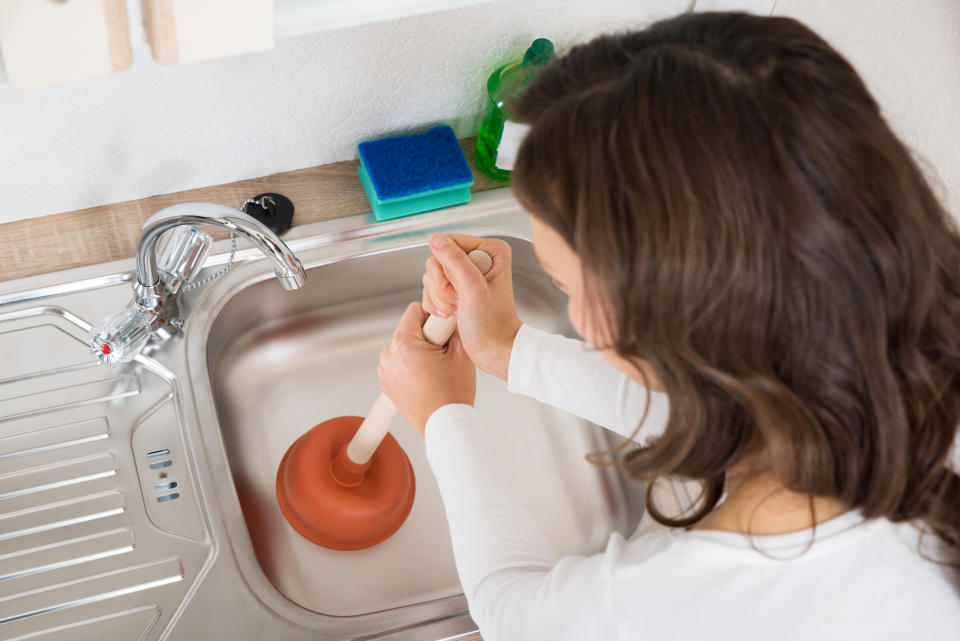Woman's hack to dispose of hot grease without pouring it down the drain shared 250,000 times

A woman has shared a clever hack for disposing of hot grease without having to pour it down the drain.
Knowing how to get rid of grease and excess cooking fat is a dilemma for every fry-up fan, and while many will be tempted to pour it straight down the plug hole or toss it straight in the bin, both solutions are laden with problems.
Pouring cooking oil and grease down a plug hole can be an issue as it will inevitably result in a clogged-up sink, as the fat and grease congeals in the pipe and picks up other food items, causing a blockage.
This will leave you with the undesirable prospect of unblocking your kitchen sink or having to fork out for someone else to fix it for you.
What’s more, the build-up of fat and grease in the sewer system can cause a major problem for the country and the environment as a whole.
Read more: Genius TikTok hack to clean stained plastic tupperware
According to Water UK, water and sewerage companies in the UK respond to approximately 366,000 sewer blockages every year and in some parts three-quarters of these are caused by fats, oils and grease.
Throwing the hot grease out with the rubbish is also not ideal as there’s a chance it could melt right through the bin bag.
Thankfully, one woman has revealed a clever trick for getting rid of hot grease without spilling a single drop down the drain and without causing a major mess in your rubbish bin.
Read more: Disgusting or genius? Mum’s hack for cleaning her toilet brush divides the Internet
Sharing her hack on Facebook, the owner of Beyond the Hem Boutique, based in the US, wrote: “I was today years old when I learned this. Need to pour out hot grease?
“Fold a sheet of foil and form it to your sink drain. Pour in the hot grease and let it completely cool. Then simply pull it up and throw away!”
She also posted two pictures showing the foil before she poured the grease in and after it had hardened, making it easy to scrunch up and throw away.
Unsurprisingly, her simple hack quickly went viral, clocking up 253,000 shares and receiving more than 40,000 comments from users impressed with the idea.
Others shared ideas of how they’ve been getting round the grease disposal problem with many suggesting pouring the grease into a container, then letting it build up and throwing it away when it’s full.
According to Naomi Wright from Lanes for Drains and Unblocktober, pouring grease down the plughole is one of the leading causes of fatbergs and drain blockages, which can lead to properties and sewers becoming flooded and damaged.
“The cost of reactive blockage clearance work across the UK each year is estimated at around £100 million, with further expenses accrued for clean-up after flooding incidents,” she explains.
“What's more, because of the damage it can cause our infrastructure and environment, it’s actually illegal, according to the Water Industry Act 1991, The Environmental Protection Act 1990 and The Food Safety Act 1990.
The problem is that, when poured down the drain, grease quickly turns from a liquid to a solid, blocking the flow of water and combining with other items that are put down the sink that shouldn't be, such as crumbs of food, as well as ‘unflushables’ such as wet wipes and cotton buds.
Wright has some other suggestions of how to safely dispose of grease.
“The easiest way to prevent fat, oil and grease (FOG) blockages is to make sure that plates, pans and utensils are scraped clean of solid food waste prior to washing,”she suggests.
“Be disciplined about brushing even the smallest scraps into the bin, and make sure to wipe down the items with kitchen roll to mop up the oil and grease before running them under the tap.
“Food scrapers are particularly useful for getting rid of even the smallest particles of grease, while we also recommend using sink strainers to catch any larger items of food that can also contribute to the formation of fatbergs.”
Read more: How to rescue a T-shirt you’ve shrunk in the wash

Mark Quinn, CEO of eco-friendly cleaning brand OzKleen suggest keeping a ‘fat trap’ or container in the kitchen to collect waste fats, oils and grease.
“You can also mix cooking oil with absorbent material such as cat litter or coffee grounds, and then throw it away in the bin,” he adds.
It’s worth noting that though the tinfoil hack solves one problem, tinfoil isn’t necessarily the most environmentally-friendly product to use.
That’s because though aluminum foil is technically recyclable, it needs to be clean – i.e. free from food residue or grease – in order to actually be recycled.
Quinn suggests scraping fats, oils and grease that have cooled into a newspaper before binning them.
Alternatively, it might be worth using the tinfoil to catch your grease, but then scraping it off into the bin once it has hardened.
Then you can reuse the tinfoil for the next batch of throwaway grease. Simple.



